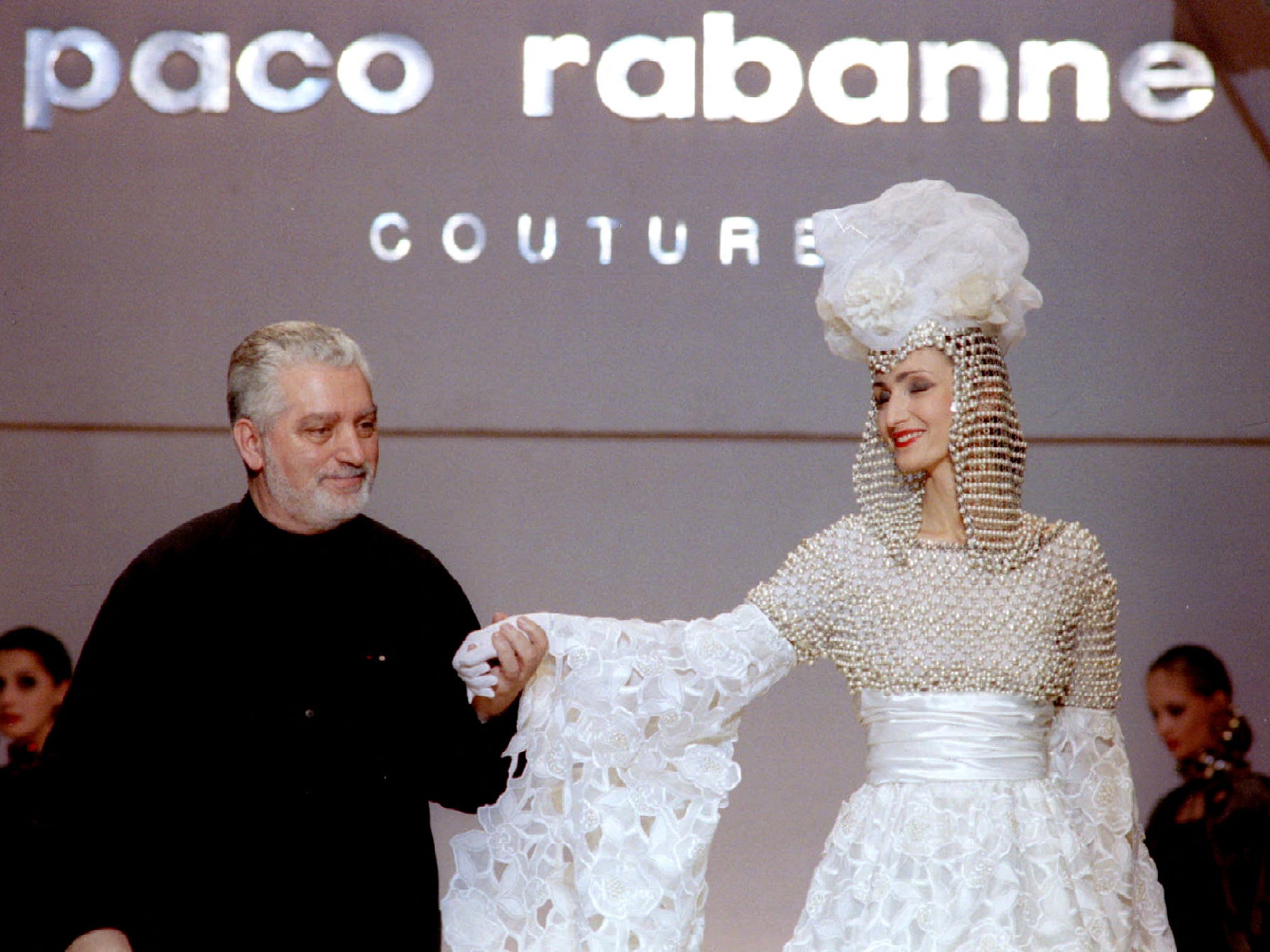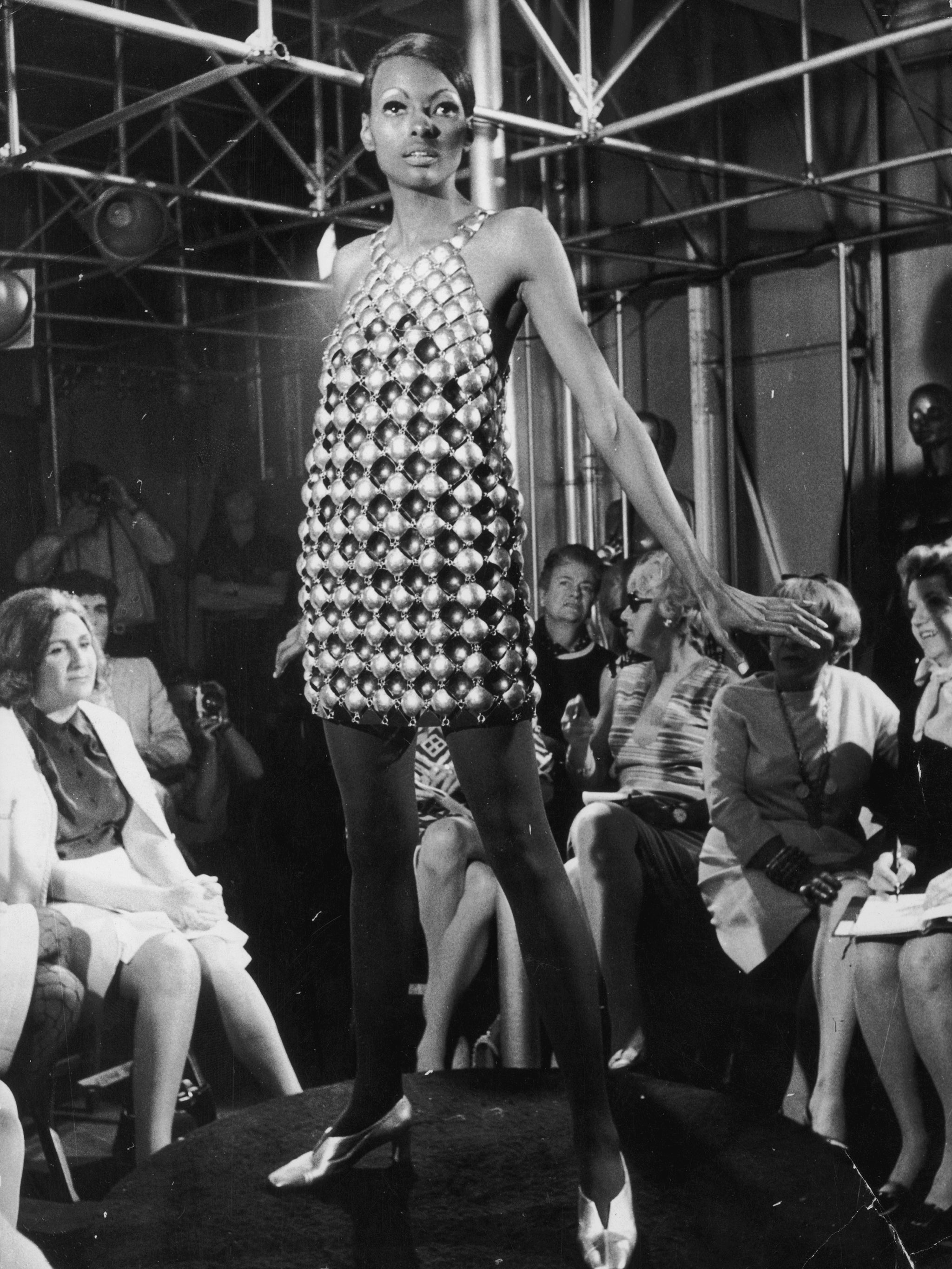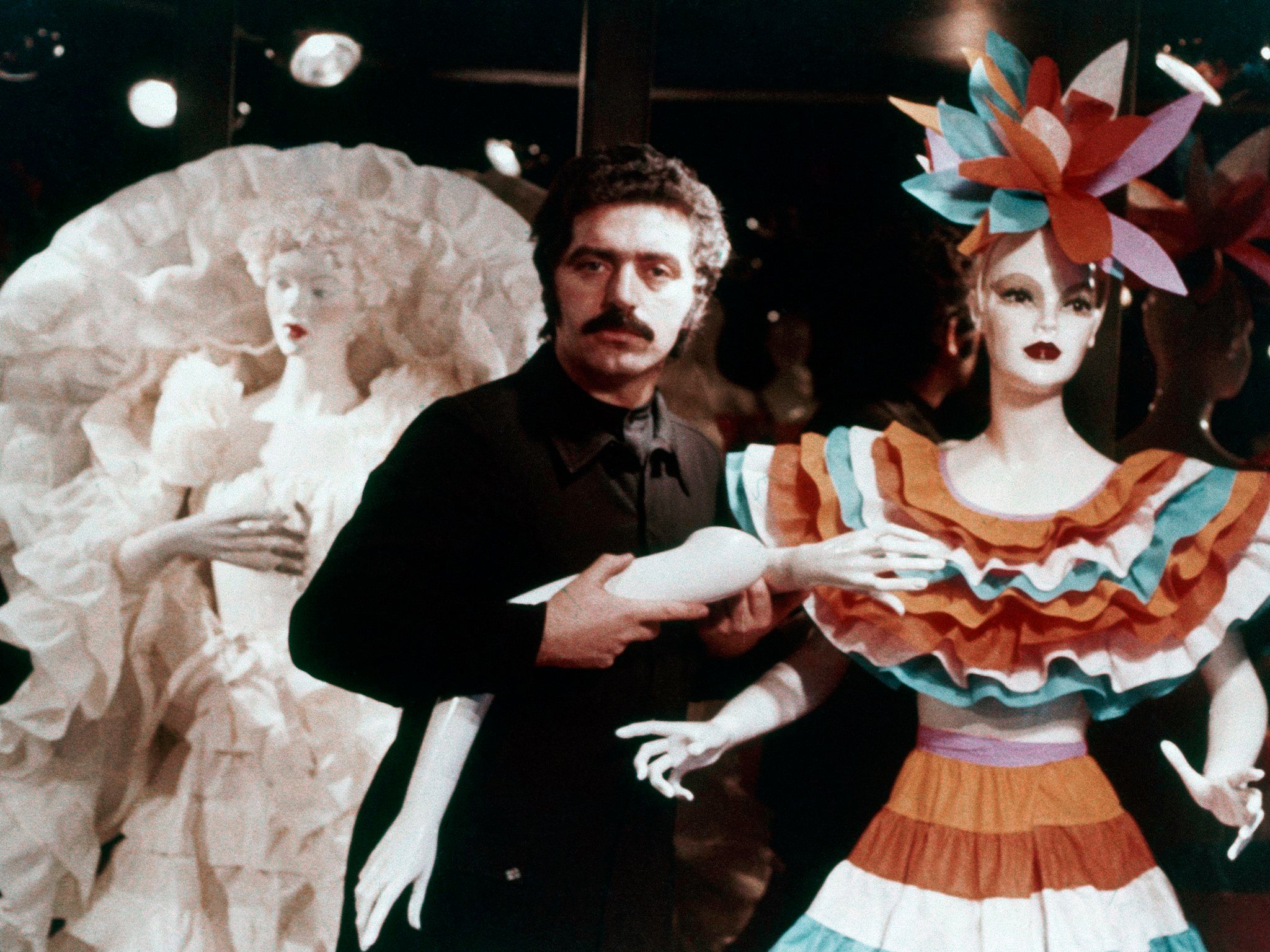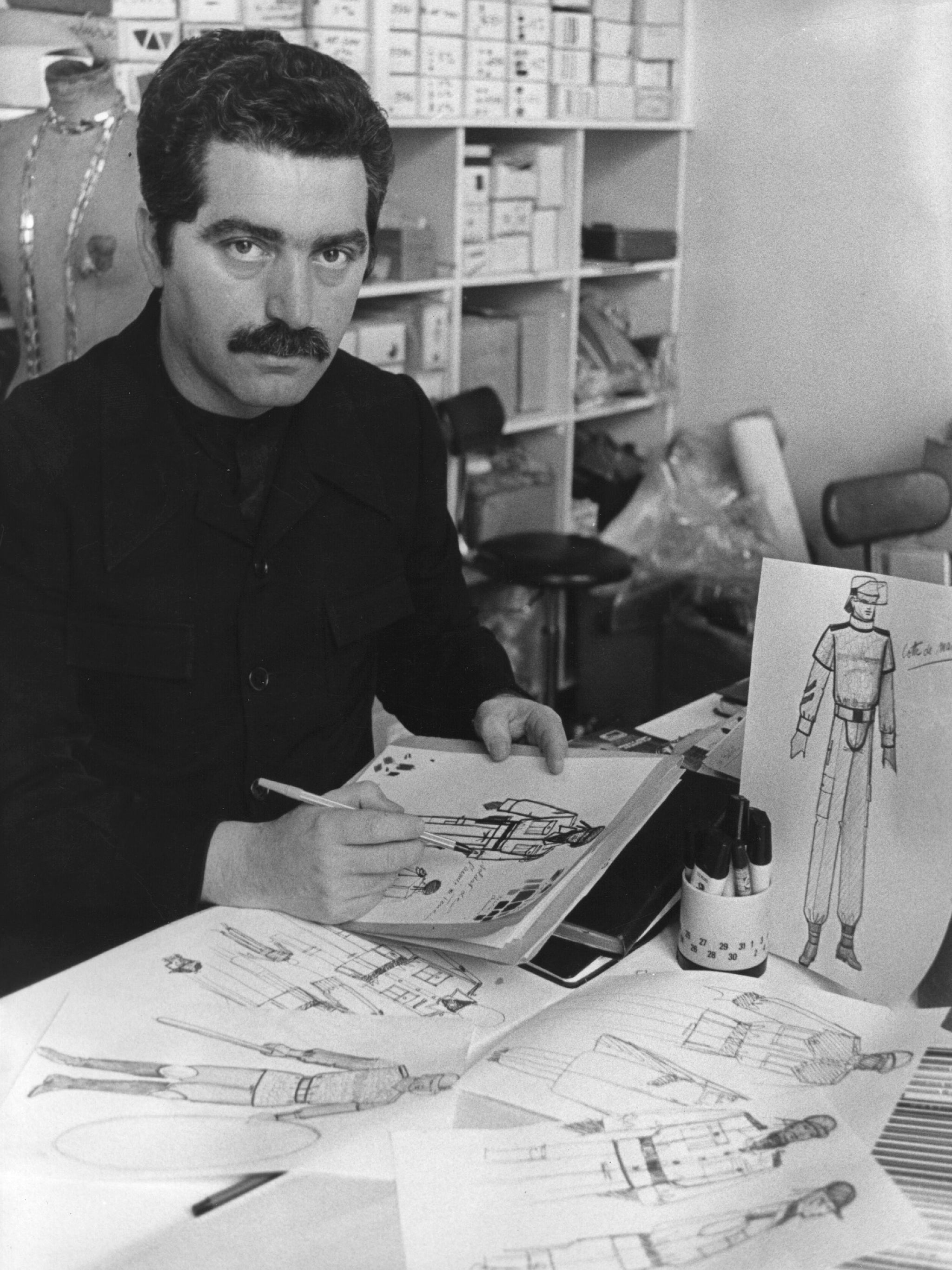Paco Rabanne: Designer who embodied the spirit of the Sixties
A fashion innovator and provocateur who defined space-age glamour with his design for Barbarella’s catsuit

Your support helps us to tell the story
From reproductive rights to climate change to Big Tech, The Independent is on the ground when the story is developing. Whether it's investigating the financials of Elon Musk's pro-Trump PAC or producing our latest documentary, 'The A Word', which shines a light on the American women fighting for reproductive rights, we know how important it is to parse out the facts from the messaging.
At such a critical moment in US history, we need reporters on the ground. Your donation allows us to keep sending journalists to speak to both sides of the story.
The Independent is trusted by Americans across the entire political spectrum. And unlike many other quality news outlets, we choose not to lock Americans out of our reporting and analysis with paywalls. We believe quality journalism should be available to everyone, paid for by those who can afford it.
Your support makes all the difference.Paco Rabanne, a fashion world innovator whose designs in the 1960s helped define the decade’s vibe of rebellion and space-age glamour with metal-plated dresses and the skintight green catsuit worn by Jane Fonda in the 1968 sci-fi cult film Barbarella, has died aged 88.
Over the decades, the Spanish-born Rabanne built a global brand widely known in retail settings for perfumes, men’s fragrances and off-the-rack outfits and, in the couture world, for runway collections that experimented with colours and materials such as plastics, paper and even coconuts.
He was also a baffling eccentric, recounting what he described as details from past lives stretching back to ancient Egypt and, in the 1990s, giving doomsday predictions that Russia’s Mir space station would plummet to Earth and wipe out Paris in 1999. It left him the subject of biting headlines such as “Beaming up to Planet Paco”.
In contrast to his bold designs, he was known for his ascetic lifestyle of few possessions and periods of reclusion in France, where he was taken as a boy with his mother in the late 1930s after his father was killed in the Spanish Civil War for opposing the right-wing forces of Francisco Franco.
“I’ve only got one influence, and that’s my invention of new fabrics,” he told The Independent in 2003. “That will be the only influence I have. You know I’m not too concerned with my legacy as I am with creating for the future. Never look back on the past.”
His influence in expanding the fashion vocabulary in the 1960s was aided by admirers such as Audrey Hepburn, Ursula Andress, Brigitte Bardot and Francoise Hardy, who all wore his designs. Fashion empress Coco Chanel called him “the metallurgist of fashion” for his groundbreaking minidresses of aluminium and other materials and clunky jewellery made of rhodoid, a type of plastic.
Fashion writer and historian Suzy Menkes called Rabanne’s 1960s designs “so much more than a New Look”. She wrote in a post on Instagram following Rabanne’s death: “It was rather a revolutionary attitude for women who wanted both to protect and assert themselves.”
His shimmery, body-hugging costume for Fonda in Barbarella became one of the sultry showpieces of the campy futurist drama. “‘That’s it!’” Fonda recounted in 2015 after seeing Rabanne’s design for the film, which was directed by her husband, Roger Vadim. “I’m best when I’m wearing something structured, with no frills or bows. Something that will show my waist and bum, because I’ve always had a good bum.”
Rabanne often played the role of fashion provocateur as much as fashion innovator.

He once had his runway models wear astronaut helmets in a fashion show. He was among the first to use Black runway models and sometimes mocked the industry’s pretensions with playful honesty. In his first major show in 1966 in Paris, he called the collection of metal dresses “Twelve Unwearable Dresses in Contemporary Materials”. Surrealist artist Salvador Dali praised the show as the work of another Spanish visionary.
“So it was a moment when women emerged to be warriors because they needed to affirm their desire of emancipation, freedom and liberty,” Rabanne said. “The armour was almost necessary.” He added: “Who cares if no one can wear my dresses. They are statements.”
Yet he also was always looking to expand his name. Rabanne became known in the 1970s for colognes, handbags and ready-to-wear fashion that made him familiar to department-store consumers around the world.

He later forged a partnership with the Spanish fashion house Puig, which owns a range of other brands including Nina Ricci, Jean Paul Gaultier, Carolina Herrera and Dries Van Noten.
Francisco Rabaneda y Cuervo was born in Pasaia, in northern Spain’s Basque region, on 18 February 1934. His mother was a chief seamstress at designer Cristobal Balenciaga’s couture house in San Sebastian. His father, an officer in the anti-Franco Republican forces, was executed by Franco loyalists after he refused to switch sides in the civil war.
The family fled to France in 1939, and Rabanne studied architecture at the Ecole Nationale Superieure des Beaux-Arts in Paris. He found a sideline selling drawings of fashion ideas: shoe designs for Charles Jourdan, accessories for Christian Dior and Yves Saint-Laurent.

In a 1997 memoir, Journey: From One Life to Another, Rabanne said the flight from Spain and watching the Second World War unfold from France “made him an adult” long before he was a teenager.
In 1959, Women’s Wear Daily published seven sketches of dresses signed “Franck Rabanne” – a name he used until adopting Paco Rabanne in 1965. At his first atelier, he used repurposed bicycle seats for chairs and developed the idea of using recycled metals and other materials, such as paper and wood chips, for dresses, on inspiration from the “found-art” creations of Marcel Duchamp.
“I am always searching for new materials, not for their shapes but for the way light plays on them and their textures. If I am a designer, it is to find new textures,” Rabanne said.

In addition to Barbarella, Rabanne’s designs were featured in films including director Jean-Luc Godard’s 2 or 3 Things I Know About Her and the spy parody Casino Royale, both made in 1967.
At the same time, Rabanne’s peculiarities became legendary. At various times, he claimed that in past lives he knew Jesus and murdered ancient Egypt’s King Tutankhamun, better known as King Tut. He urged people to leave Paris before August 1999, when he said the Russian Mir space station would crash into the city and kill thousands.
He was fond of style koans. “Fashion announces the future,” he said, describing his theory of hairstyles as crystal balls. “When hair balloons, regimes fall. When hair is smooth, all is well.”
In 2005, he opened an exhibit of his drawings that he said were influenced by the 2004 attack in Beslan in Russia’s North Ossetia region, where Islamist militants killed more than 300 people, including many children. Rabanne asked that the proceeds from the show go to families affected by the bloodshed. For the 2011 MTV Europe Music Awards, he designed a paper gown worn by Lady Gaga.
Rabanne’s influence remained a recurring theme among designers. In 2003, Prada covered bathing suits with moulded plastic applique, and Dolce and Gabbana unveiled silver astronaut-style suits – both a homage to Rabanne’s 1960s work.
Information on survivors was not immediately available. Rabanne presented himself as an outsider whose designs tried to shake up the fashion world. He could, however, flash a sense of humour about the line between fashion as art and fashion as something practical to put on.
He told an interviewer that he once designed a mermaid dress made of mother-of-pearl disks in the 1960s for a client who owned an art gallery. “She wore it one night to a Mozart concert,” he recounted. “She walked in late and stopped the concert because she sounded like a wind chime.”
Paco Rabanne, fashion designer, born 18 February 1934, died 3 February 2023
© The Washington Post


Join our commenting forum
Join thought-provoking conversations, follow other Independent readers and see their replies
0Comments